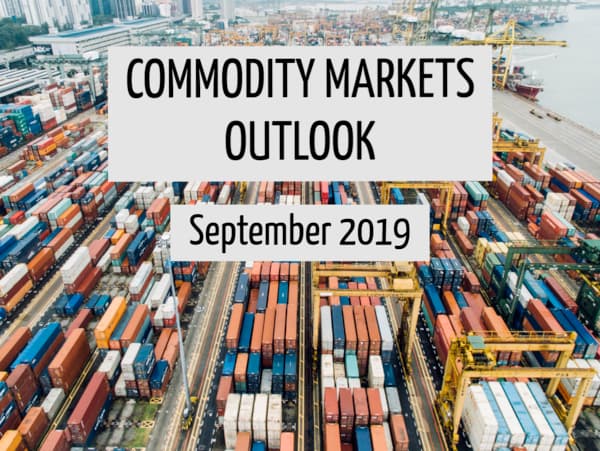
Geopolitical tensions are having a growing impact on markets. US-China trade conflict and higher trade barriers is impacting markets after the longest economic cycle in the US. Financial restrictions on US portfolio flows into Chinese assets and stricter US listing requirements for Chinese companies are adding to the slowing global growth environment we are in, particularly with a lasting slowdown in economic activity, especially in China reaching one of the lowest points in the last 10 years but also elsewhere with a 10-year low in US ISM manufacturing. Physical metals demand has weakened further even though prices in USD have remained stable in September. The market seemed very much split on whether the Fed will cut rates by another 25 basis points at the end of the month but with the outright purchase of treasury to ‘calm the recent stress in the funding market’, we could expect a return of some kind of quantitative easing through the so-called Permanent Open Market Operations (or POMO). The recent gold retracement (down 3.7% in September but still up 15% YTD) was due to an overcrowded position in the market and liquidation due to a Fed more hawkish than expected.
Brent oil jumped from 60.78 $/bbl to 71.95 $/bbl on 16th of September, the biggest move on record due to a coordinated attack that hit the heart of Saudi Arabia’s oil industry, forcing the kingdom to cut its production. The shortfall is expected to be compensated by a significant domestic destocking. JODI reports global stocks owned by Saudi Arabia to be at 188 mb, with the worst case scenario, given the rapid improvement of the situation, pointing to a maximum reduction of less than 30 mb of their inventory. That explained the rapid retracement in the following days. Geopolitical risks remain very high in the region and the danger of the conflict extending regionally over the next 12-18 months may make such rally on the upside again very possible. The overall long term picture remains that of slowing demand growth and risk on the downside due to ample spare capacity.
Quality of Minneapolis wheat crop was damaged due to wet conditions during the end of harvesting (roughly 90% harvested), raising the entire wheat complex. This was rather surprising as estimation of a good harvest sent the price lower since June. Corn, which is typically harvested after wheat, gained (5% in September) due to lower estimate of North American supplies (2.1 bio bushels stocks instead of 2.4 bio estimated). The remaining harvest could send prices even higher if crop yield worsens compared to the ‘good to excellent’ market expectation. Soybean (+4%) was also supported by higher export sales to China as tariff tensions eased.
On the volatility side, September gave back August’s gains in equity and precious. The VIX is down on the month from 18.98% to 16.24% while VSTOXX is down from 17.67% to 15.82%. Gold implied volatility is also slightly down from 14% to 13% for ATM calls while silver implied volatility is down from 24% to 22%. There was barely any change in the agricultural sector with implied volatility for corn stagnating at 18% and for soybean up from 15% to 16%. Most of the action happened on crude, where implied volatility for ATM calls was up from 31% to 38% on the month. Noticeably it peaked at 73% (up 170% from previous close) on the 16th after the attacks on Saudi Arabia oil infrastructure but almost halved again within 48 hours.
Author: Four Elements Capital
